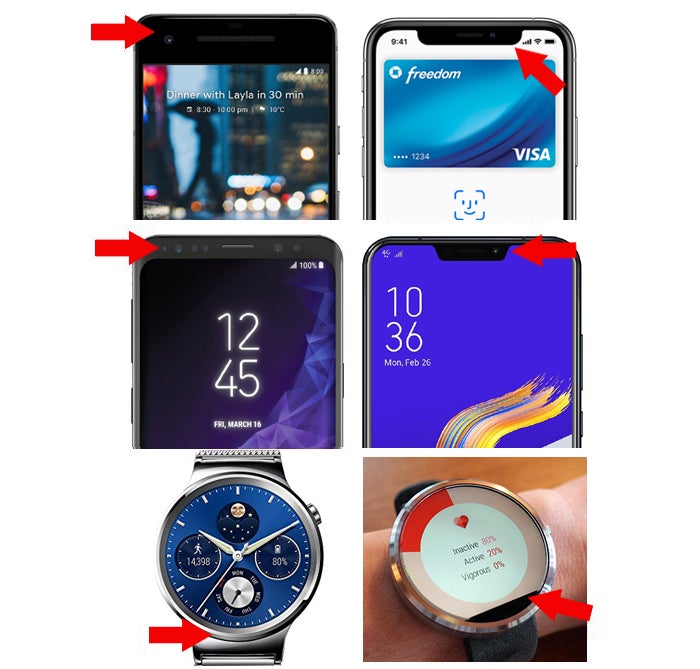Looking at the march of Android-related announcements stomping out of the Mobile World Congress event in Barcelona this week, it's hard not to feel like you're watching a really weird high-tech circus — a parade of attention-grabbing oddities and eccentric abilities, all on display because the ringmaster knows you'll look.
On one side of the big top, you've got the LG G8 ThinQ (gesundheit!), with its wild new trick that lets you unlock your phone or even control the device by waving your palm just so or making odd claw shapes with your fingers (because that's apparently something people want to do). Elsewhere, you see the V50 ThinQ 5G (gesundheit — my goodness!), a chunky phone with a built-in cooling system, a glowing 5G logo on its back, and an awkward secondary screen that attaches via a separate case.
Beyond those, you've got the comically long and narrow Sony Xperia 1 — which, for perspective, is just over 5mm taller than a Galaxy Note 9 (or in layman's terms, tall enough to be impossible to fit in any non-giant's pocket). Oh, and let's not forget the Huawei Mate X, a $2,600 foldable phone that makes the entire exterior of your device a hinge-sportin' screen — because by golly, that sure shouldn't cause any durability issues — with a thickness roughly comparable to Samsung's very first Android phone, way back in 2009.
It's enough to make your head spin. And all of this is but a tiny sampling of the mobile-tech house of peculiarities being pranced around us right now.
More than anything, you know what I can't help but thinking? Yes, all of this stuff is incredibly cool, from a gadget-geek, "Whoa, look at what they can do now!" kind of perspective — but at the same time, almost all of it represents a practical downgrade when it comes to actual user experience. There's a difference between something being cool for the sake of cool and something being genuinely useful and beneficial in the real world, from a human-person perspective — and almost every smartphone hardware trend we've seen lately has fallen onto the former side of that incredibly significant split.
It's a slightly crazy thing to say, I realize, but think about it: On the foldable phone front, we've talked plenty about how this current crop of folding-screen phones is, as some handsome and astute scribe recently put it, "a collection of compromises with little significant value aside from novelty and technological 'wow' factor." Foldable phones right now require you to use ridiculously thick and awkward devices with oodles of asterisks, including subpar display quality, decreased durability, spotty app support, and questionable real-world value.
 Samsung
Samsung
A $2,000 folding phone — or a 2009-era Android phone? Practically speaking, the primary-usage forms aren't all that different.
When it comes to the upcoming crop of soon-to-be-hyped 5G phones, you'll be looking at overpriced devices with expensive service and all sorts of added compromises — thick, hot-running phones with likely subpar battery life and no cross-carrier compatibility — all for a higher rate of data connectivity that isn't actually gonna be available on any meaningful scale for years yet.
And you know what? It isn't just the marquee mobile tech trends that factor into this; it's almost every smartphone hardware advancement of the past few years. For instance, how 'bout the move to in-display fingerprint sensors instead of the effective and ergonomic back-of-phone alternatives we had before? Those in-display sensors looks futuristic, sure — and they're a nice selling point on any "Why you should upgrade to this newer model" marketing sheet — but ask anyone who's spent much time using the suckers, and they'll tell you the same thing: In-screen fingerprint sensors are universally inferior to their plainer back-of-phone brethren. No matter how spiffy they may seem, they're inherently slow, inconsistent, and awkward to use.
Or what about the whole low-bezel, weird-notch movement we've been living with for a while now? Sure, smaller bezels look snazzy and go a long way toward making a new device seem meaningfully different from the previous model. But guess what? A notch itself is a bezel — a particularly prominent and distracting one, at that. Why do you think device-makers go out of their way to hide their notches and provide people with ways to mask 'em via software?
 Google/Apple/Samsung/Asus/LG/JR Raphael
Google/Apple/Samsung/Asus/LG/JR Raphael
These are all bezels. Which ones catch your eye more?
Besides, with or without a notch, having slimmer bezels in and of itself isn't always all that advantageous in real-world terms. But this stuff isn't about real-world benefit to us as owners of these devices, remember?
Last but not least, let's not forget about the slow but steady removal of 3.5mm headphone jacks on most modern flagships — perhaps the industry's most user-hostile shift of all. This one is less about selling phones, directly, and more about cutting costs and simplifying the manufacturing process. It's certainly not the end of the world, but it's yet another downward-step-requiring compromise — one most of us eventually accept, with varying amounts of begrudgery involved, but one few if any people would actively embrace as a good thing.
If you were to sum up the advances in mobile tech hardware over the past few years, those are the main points of progress that'd probably come up, right? And yet, when you really stop and think about 'em, every single one is ultimately a benefit for the coffers of the companies that make and sell the devices — at the expense of an optimal user experience for those of us actually use the things on a day-to-day basis.
After years of stagnation, it's encouraging to see experimentation in the realm of smartphone hardware — but it'd sure be nice for that process to start happening on a level that provides true practical benefits for us, the mammals who own the devices, instead of working counterproductively and making our lives a little less optimal with every eye-catching "upgrade" that crawls along.
Sign up for my weekly newsletter to get more practical tips, personal recommendations, and plain-English perspective on the news that matters.

[Android Intelligence videos at Computerworld]



























































































